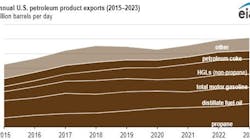Producers in the Appalachian basin will benefit unevenly from markets opening for natural gas from the Marcellus and Utica shales, according to a Canaccord Genuity analyst.
Pipeline projects due on stream soon will alleviate a surplus in the southwestern part of the basin, wrote Karl Chalabala in a mid-September report on an updated supply-demand model.
But the gas price will remain weak in the northeastern Appalachian basin until markets begin opening for supply there in 2016—unless operators ease drilling or curtail production.
Chalabala said pipeline capacity will begin to exceed need in the southwestern Appalachian basin at the end of this year. Overall system expansions beneficial to northeastern operators won’t occur until the second half of 2016, according to an analysis that focuses on takeaway capacity by omitting projects that will move gas largely within the region.
Most capacity expansions directly benefiting producers in the northeastern part of the play will occur after the first half of 2017, the analyst said.
Beyond 2016, new approvals for LNG exports, increased replacement of coal by natural gas in power generation, and growth in the industrial market paint “a robust and improving demand picture” for the basin, he said.

